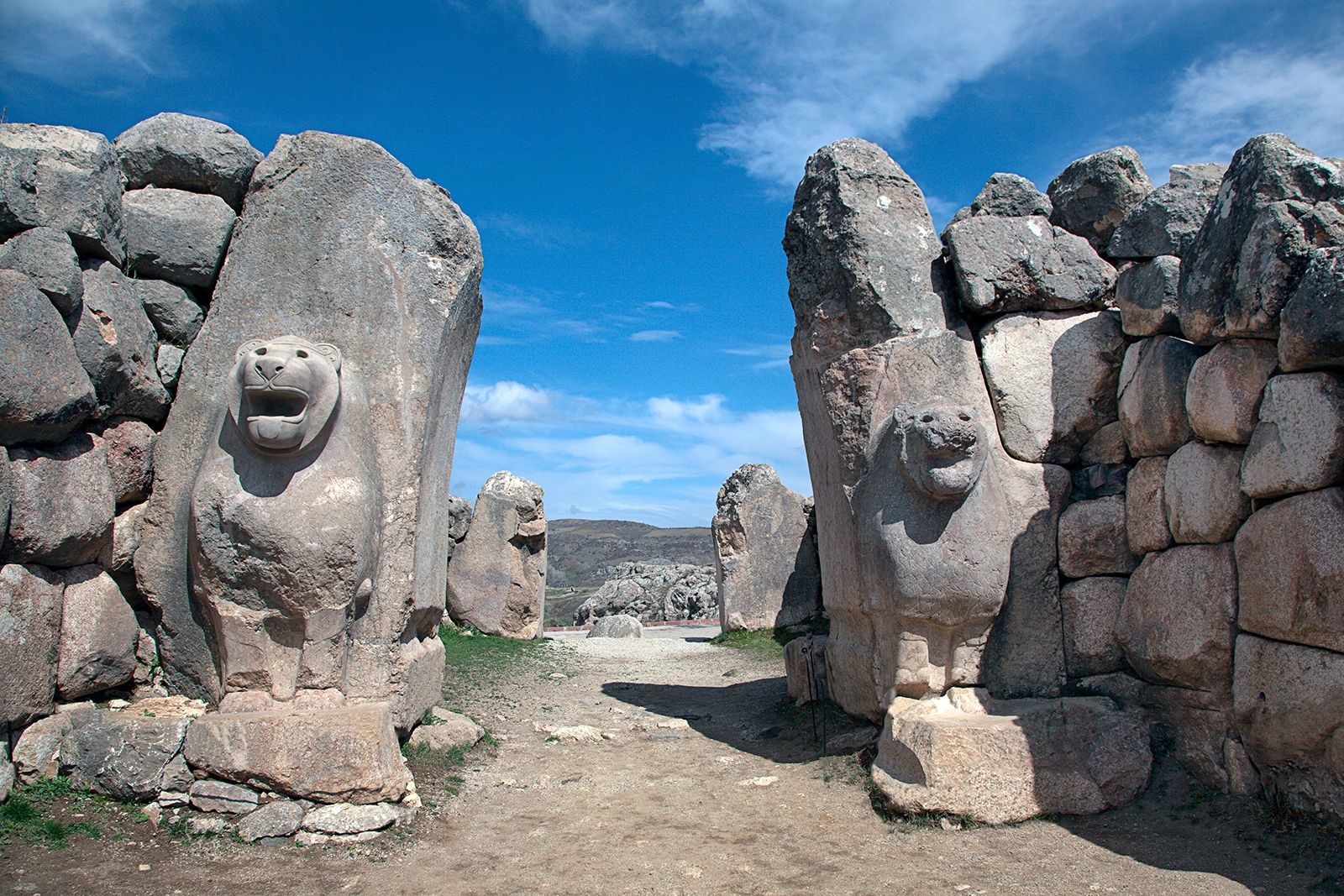Description

Disclaimer: Copyright infringement not intended.
Context
- The discovery of a previously unknown Indo-European language during an excavation in Boğazköy-Hattusha, Turkey, is a remarkable development in the field of linguistics and archaeology.
Details
Historical Background
- Boğazköy-Hattusha: Boğazköy-Hattusha is a UNESCO World Heritage Site located in north-central Turkey. It was the capital of the Hittite Empire during the Late Bronze Age (1650 to 1200 BC), making it one of the dominant powers in Western Asia during that period.
- Cuneiform Tablets: The site has been the focus of archaeological excavations for over a century, primarily under the direction of the German Archaeological Institute. These excavations have yielded a treasure trove of over 30,000 clay tablets with cuneiform writing. These tablets provide valuable insights into the Hittite civilization and its neighbors, covering aspects of history, society, economy, and religion.
Discovery of a New Indo-European Language
- Hittite Ritual Text: During the recent excavations led by Professor Andreas Schachner, a cultic ritual text written in Hittite was uncovered. However, embedded within this text was a recitation in a previously unknown Indo-European language.
- Language of Kalašma: The newly discovered language is referred to in the Hittite text as the "language of the land of Kalašma." Kalašma is believed to have been located on the north-western edge of the Hittite heartland, possibly in present-day Bolu or Gerede.
- Interest in Foreign Languages: The Hittites had a unique interest in recording rituals in foreign languages. This practice resulted in the preservation of various linguistic traditions from Anatolia, Syria, and Mesopotamia within their archives.

Linguistic Significance
- Anatolian-Indo-European Languages: The newly discovered language, referred to as Kalasmaic, belongs to the family of Anatolian-Indo-European languages. This family includes languages like Hittite, Luwian, and Palaic, all of which have been attested in the cuneiform texts from Boğazköy-Hattusha.
- Linguistic Investigation: Scholars are now engaged in a more detailed analysis to precisely classify the Kalasmaic language and determine its relationship with other Anatolian-Indo-European languages. Initial observations suggest that it shares characteristics with Luwian, although further research is needed for a definitive classification.
About Boğazköy-Hattusha
- Boğazköy-Hattusha, also known as Hattusa, is a remarkable UNESCO World Heritage Site located in modern-day Turkey.
- It was the capital of the Hittite Empire, one of the great ancient civilizations of Anatolia.
Historical Background:
- Ancient Capital: Hattusha served as the capital of the Hittite Empire, which flourished during the late Bronze Age, primarily between the 17th and 12th centuries BCE. It was one of the dominant powers of its time.
- Hittite Civilization: The Hittites are known for their advanced culture, governance, and military prowess. They left behind a substantial corpus of inscriptions, known as the Hittite Laws and Hittite annals, written in cuneiform script.
Archaeological Significance:
- City Layout: Hattusha's archaeological remains reveal a well-planned city with impressive fortifications, monumental gates, temples, and residential areas. The city was strategically located in a mountainous region.
- The Great Temple: The Great Temple of Hattusha, dedicated to the Hittite storm god, is a remarkable religious structure characterized by massive stone walls and intricate carvings.
- Yazılıkaya Rock Sanctuary: One of the most fascinating features of Hattusha is the Yazılıkaya rock sanctuary, located just outside the city walls. It contains rock reliefs and carvings depicting Hittite deities and royalty.
- Royal Palace: The site also includes the remains of a royal palace, featuring grand halls, courtyards, and numerous chambers. The Lion Gate, adorned with Hittite-style sphinxes, served as the entrance to the palace.
- Cuneiform Tablets: Hattusha yielded a significant number of cuneiform tablets that provide invaluable insights into Hittite society, politics, and culture. These tablets were written in the Hittite language.
Cultural and Historical Significance:
- World's Oldest Peace Treaty: Hattusha is known for the "Treaty of Kadesh," one of the world's oldest recorded peace treaties. It was negotiated between the Hittite Empire and the Egyptian Empire, marking a significant diplomatic achievement.
- Hittite Religion: The site's religious structures and inscriptions provide crucial information about the Hittite pantheon and religious practices, offering a glimpse into the spiritual life of this ancient civilization.
- Lost and Rediscovered: Hattusha and its importance were largely forgotten until the late 19th century when it was rediscovered by European archaeologists. Excavations began in earnest in the 20th century, leading to a deeper understanding of Hittite history and culture.
- Recognition: Hattusha was designated as a UNESCO World Heritage Site in 1986, recognizing its immense historical and cultural significance.

Conclusion
The discovery of the Kalasmaic language within the Boğazköy-Hattusha archives is a significant contribution to our understanding of the linguistic diversity of the Late Bronze Age Anatolia. It sheds light on the rich tapestry of languages spoken and recorded during this period, providing valuable insights into the cultural interactions and exchanges of the time. This discovery underscores the ongoing importance of archaeological excavations in unraveling hidden aspects of our shared human history.
|
PRACTICE QUESTION
Q. Which of the following statements about the Hittites is/are correct?
- The Hittites were an ancient civilization that thrived during the Late Bronze Age in Anatolia.
- They are known for their extensive use of hieroglyphics in their inscriptions.
- The Hittite capital of Hattusha is a UNESCO World Heritage Site.
Options:
A) 1 and 2
B) 2 and 3
C) 1 and 3
D) 1 only
Answer: C)
|
https://phys.org/news/2023-09-indo-european-language-excavation-turkey.html







